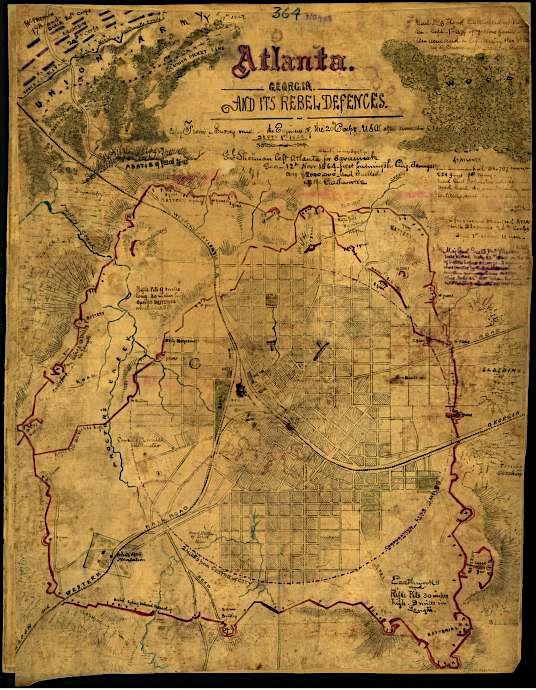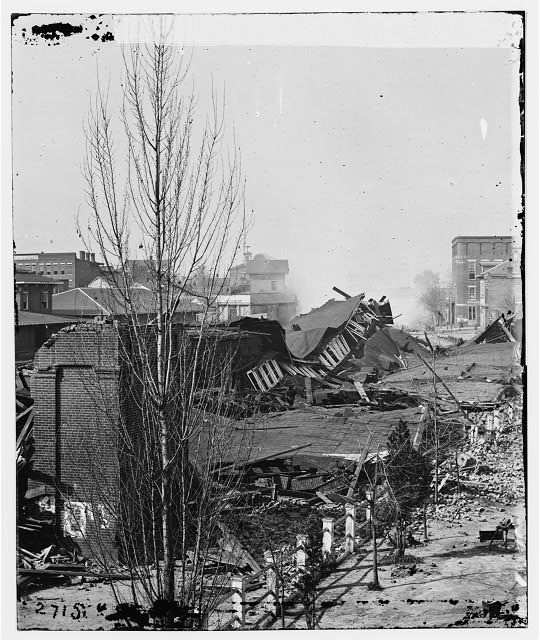Destruction of Atlanta in Civil War
First settled in the 1830s, Atlanta developed into a Southeastern center for commerce and industry in the decades leading up to the Civil War. Major railroads that connected the Southeast ran through the city. With the secession of Georgia and the Confederate States, the American Civil War commenced and Atlanta became of strategic importance to the Confederacy. Its railroads were used to transport supplies and troops throughout the Southeast and the city housed thousands wounded Confederate soldiers. In the fourth year of the War, Northern General William T. Sherman advanced into the Southeast and directed his route towards Atlanta. Through capturing the city and its railroads, Sherman believed he could significantly weaken the Confederate’s transportation network (Hillyer, 138-144). To obstruct Sherman’s advancement, Confederate forces formed a defensive perimeter within the mountainous terrain around Atlanta. This perimeter was illustrated by Union mapmaker, Robert Knox Sneden. In his map, Atlanta, Georgia and its rebel defences (Sneden), Sneden drew the Confederate perimeter in red, a layout of the city, and the Western Atlanta and the Macon & Western railroads. In July of 1864, Sherman surrounded Atlanta and began besieging it. Later that month, the Union army reached within artillery range and began an incessant five-week bombardment of the city. Unable to withstand the Union advancements, the Confederates withdrew from the city on September 1, after four months of relentless conflict. Entering the city, Sherman confiscated civilian property, deported hundreds of Confederate sympathizers, and ordered the evacuation of the remaining inhabitants. Then, the Union troops plundered and burned thousands of buildings, leaving as little as four hundred untouched. Civil War photographer, George Barnard, took a photograph of a supply storehouse in Atlanta that was exploded by Sherman’s army. This picture, Atlanta. Ga. Ruins of depot, blown up on Sherman’s departure (Barnard), shows a large storehouse that was reduced to a heap of rubble and tangibly demonstrates the destruction that Atlanta experienced. (Link, 7-57).
Works Cited
Barnard, George, N, photographer. Atlanta. Ga. Ruins of depot, blown up on Sherman’s departure. Photograph. Retrieved from th Library of Congress, <www.loc.gov/item/2018666986>.
Hillyer, Reiko. Designing Dixie: Tourism, Memory, and Urban Space in the New South. University of Virginia Press, 2014.
Link, William A. Atlanta, Cradle of the New South: Race and Remembering in the Civil War's Aftermath, Chapel Hill, University of North Carolina Press, 2013.
Sneden, Robert Knox. Atlanta, Georgia and its rebel defences sic.[1864 to 1865] Map. Retrieved from the Library of Congress, <www.loc.gov/item/gvhs01.vhs00311/>.

